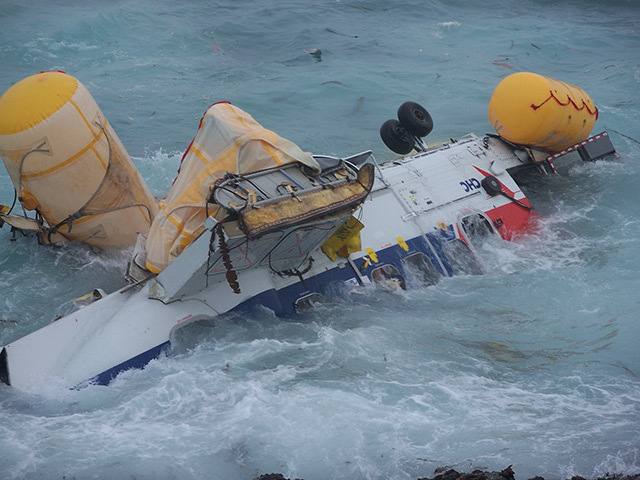
Air accident experts investigating a North Sea helicopter crash which claimed four lives have highlighted a concern about pre-flight safety briefings on emergency equipment.
The Air Accidents Investigation Branch (AAIB) has asked helicopter operators to amend the briefing material about emergency breathing systems (EBS) given to passengers before they fly.
Four oil workers died when their Super Puma helicopter plunged into the sea off Shetland on August 23 last year with 18 people on board.
As part of its ongoing investigation, the AAIB published a special bulletin about EBS, which allow passengers and crew to breathe underwater for a short period of time after a helicopter has capsized.
One of the three types of EBS commonly used is a hybrid system which contains its own air supply and allows the user to breathe even if they have not taken a breath before they are submerged.
The AAIB said pre-flight safety material does not include “fully representative information” about the EBS and does not highlight that it might be a hybrid system, which might influence a passenger’s decision on whether to use it.
One model widely used by operators of North Sea offshore helicopter flights is the Lifejacket Airpocket Plus (LAP) combined lifejacket and hybrid rebreather.
In its bulletin the AAIB said: “Incomplete information in the pre-flight safety briefing material may give passengers the false impression that hybrid rebreathers such as the widely used LAP system are only of benefit if the user has taken a breath prior to becoming submerged.
“Knowledge that hybrid rebreathers contain their own supply of air may therefore influence a passenger’s decision on whether or not to use the EBS in an emergency situation.”
The AAIB has asked helicopter operators which use the hybrid EBS to make it clear that hybrid systems contain their own air supply.
It said: “Whilst operation of the hybrid EBS should be covered in initial and recurrent training, it is not explicitly described in the pre-flight safety briefing.
“The operators have undertaken to amend their pre-flight briefing material to include information that the hybrid system contains its own air supply which is discharged automatically, making the system usable even if the wearer has not taken a breath before becoming submerged.”
The crash claimed the lives of Duncan Munro, 46, from Bishop Auckland in County Durham; George Allison, 57, from Winchester, Hampshire; Sarah Darnley, 45, from Elgin, Moray;, and Gary McCrossan, 59, from Inverness.
The Super Puma was returning from the Borgsten Dolphin support vessel to Sumburgh Airport.
An investigation into the crash is continuing. The AAIB says it has found no evidence of technical failure in the helicopter, which was carrying 16 passengers and two crew.
Recommended for you
